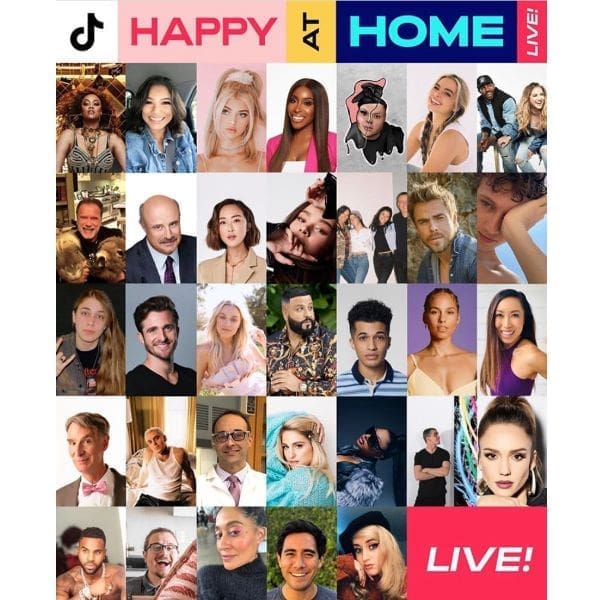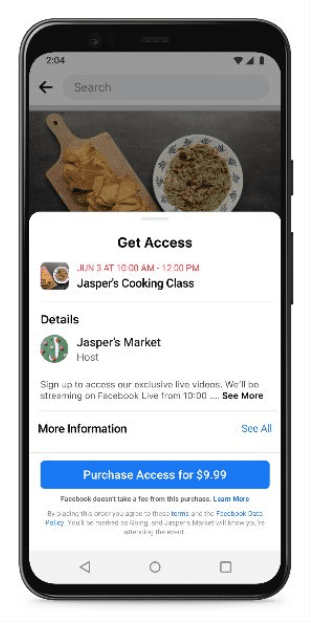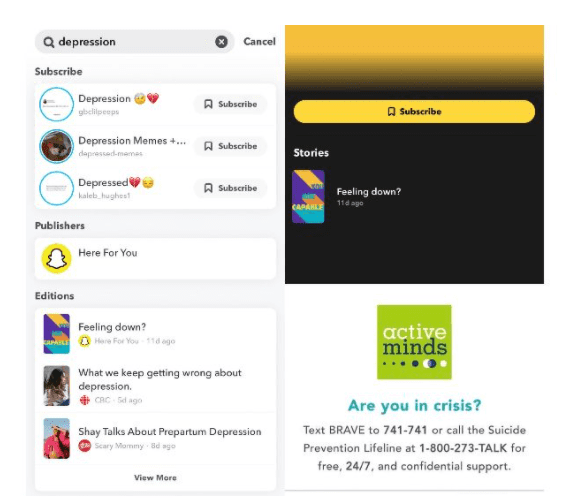-
Articles + –
2020 Social Media Year in Review – Part 1: Platform Overview
Mintel is taking a look back at social media in 2020, with a focus on platform overview, noteworthy campaigns and brand initiatives, and platforms to watch in a three-part series.
During a year with minimal in-person shopping, social media eCommerce became crucial for brands and platforms alike. Here, we provide an overview of the top platforms in 2020.
TikTok
TikTok continues its rise to mainstream popularity
TikTok was the newest platform of choice for consumers of all ages during the pandemic. Unsurprisingly, Gen Zers were the most avid fans of TikTok, though Millennials also significantly increased their daily use of the platform in 2020.

Catering to creators, users, and brands
TikTok was connected and responsive to its user community during the onset of COVID-19. By dedicating significant resources toward live-streamed content for its #HappyAtHome series, TikTok uplifted consumers while sustaining its creator community. Meanwhile, features like Small Gestures gave brands an opportunity to partner with the app and saw enormous success overall during quarantine.
Looking ahead: Shoppable content
TikTok recently ventured into the social commerce space with a Shopify partnership. Though eCommerce capabilities on the app are currently limited to paid campaigns, it is likely that organic shopping content will follow in 2021. Brands with established TikTok followings, especially those already using Shopify as a vendor, should be prepared to move quickly.
Three in 10 Gen-Z and Millenials are interested in TikTok shoppable posts, according to Mintel research on evolving eCommerce.
Pinterest keeps consumers clicking during the pandemic
Aside from Generation Z, Pinterest saw increases in daily use from all age groups in 2020. The discovery-based platform also made multiple updates to keep users engaged during lockdown, hitting peak usage in the months leading up to the holidays.
Focusing on storytelling

Looking ahead: Personalized curation
The prevalence of eCommerce during COVID-19 has left consumers craving shopping inspiration and direction. Because users are curating their ideas on Pinterest more than ever, the platform recently debuted multiple features aimed at content personalization and organization. Now that users can add their own notes to Pins, brands with loyal audiences on Pinterest should look for insights on how consumers personally curate branded content.
Instagram gains ground with older users
Over the last year, Instagram saw an increase in daily use from all age groups except those aged 18-24, likely due to the rise of Gen Z favorite TikTok. The visual platform did, however, make strides with more mature consumers.
Change in daily use in 2020, by age:
45-54: +25%
55+: +86%
Integrating eCommerce and IGTV

Looking ahead: User reviews
Instagram users can browse brand catalogs, view product photos and videos, and complete purchases all within the app. However, the visual platform’s eCommerce capabilities lack consumer testimonials, which are the key to gaining the trust of skeptical shoppers. Brands eager to expand their sales via social shopping should express a desire for the ability to add reviews to their Instagram storefronts.
LinkedIn sees boost from non-traditional workforce
Consumers across employment groups upped their daily use of LinkedIn in 2020. In addition, since COVID-19 began threatening the jobs of many in March, those who were self-employed or looking for work began using the networking platform much more regularly.
Virtual events in an all-digital world

Looking ahead: Bite-sized content
While LinkedIn users typically share longer-form pieces such as articles and in-depth videos, younger social media users tend to gravitate toward more fast-paced content. LinkedIn took its first step toward more digestible content with the advent of LinkedIn Stories in October, and companies—especially those hoping to attract entry-level employees—should prepare for additional new types of micro-content in the coming year.
Twitter fosters digital connections during COVID-19
After traffic on Twitter slowed at the beginning of 2020, users aged 18-54 all increased their daily use of the platform. By releasing updates dedicated to connection and discovery, Twitter was able to recapture the interest of consumers during quarantine.
Commitment-free content

With younger users particularly averse to permanent content, Fleets could be the simplest way of motivating young users to spend more time on the platform. And because Twitter’s survival depends on its youngest users, the platform’s copycat feature could be a wise move. And because users are familiar with the format, brands looking to diversify their content on Twitter can do so with ease.
Looking ahead: Community discovery
Many consumers found a sense of community on Twitter during the pandemic, and the platform has become a gathering place for like-minded groups of users with niche interests. To retain the momentum of these online communities in 2021, Twitter will likely develop new features that encourage repeat conversations among similar users.
Nearly half of Millennials like having conversations with people they don’t know on social media, according to Mintel research on connection and communication in a digital age.
Facebook use stalls among younger consumers
All users below age 55 decreased their daily use of Facebook in 2020, causing the social network to focus on new initiatives aimed at younger users, like Facebook Campus.
Change in daily use in 2020, by age:
18-24: -28%
25-34: -7%
35-44: -4%
45-54: -6%
Streamlining virtual events

Looking ahead: secure shopping
Though Facebook built the foundation for social eCommerce, data breaches have left users wary of shopping on the social network. And because Facebook allows a wide variety of sellers to monetize their businesses on its platform, consumers are unsure of who they can trust to complete a valid transaction. Going forward, Facebook and retailers will need to work together to prove that users’ shopping data is secure.
According to Mintel research on social media eCommerce, more than two in five online shoppers who haven’t made a purchase from a social media site don’t trust social platforms with their payment information.
Snapchat
Gen Z interest in Snapchat falters
Despite being Snapchat’s primary age demographic, Gen Zers decreased their daily use of the ephemeral platform over the last year. To reclaim the attention of its target audience, Snapchat supplemented its platform with new initiatives and partnerships.
Providing users support with Here For You

In 2020, Snapchat joined in with Here For You, which shows mental health safety resources from users’ local experts. Similar to Pinterest, the feature is triggered when a user searches for topics related to mental health like depression or bullying. As more social platforms prioritize users’ mental health, brands must do the same.
Looking ahead: Video chatting
According to Mintel research on connection and communication in a digital age, only one in five users have a preferred video chat service, leaving room for new competitors. Snapchat has always placed a heavy emphasis on encouraging conversations within users’ personal social circles, giving it the potential to serve its users as the go-to video chat platform for close friends. As consumers continue to experience Zoom fatigue, brands should watch Snapchat as an area of opportunity for video conversations.
Check out ‘Noteworthy campaigns and brand initiatives’ in part two of this three-part series.

Sara is a Consumer Insights Analyst at Mintel, with a focus on producing social media research and infographics for reports.
-
UK COVID-19 and Technology: A Year OnFind out more about the technology market...View our reports store
-
Mintel LeapMintel Leap is a revolutionary new AI-powered platform that will transform your research process....Book a demo






































